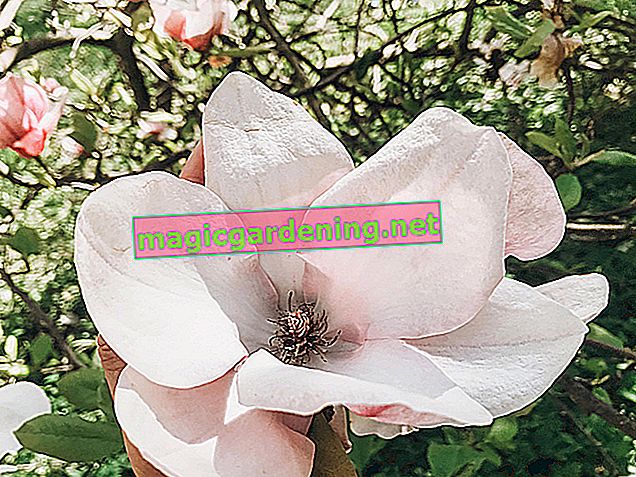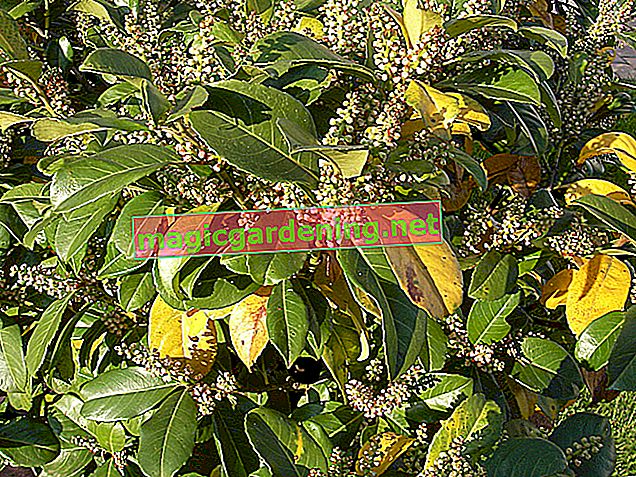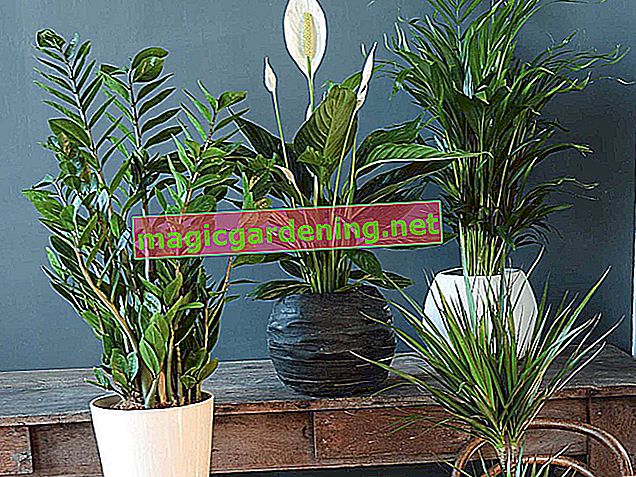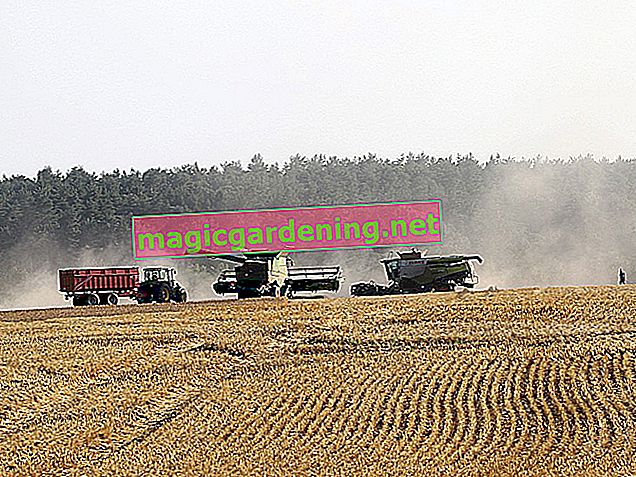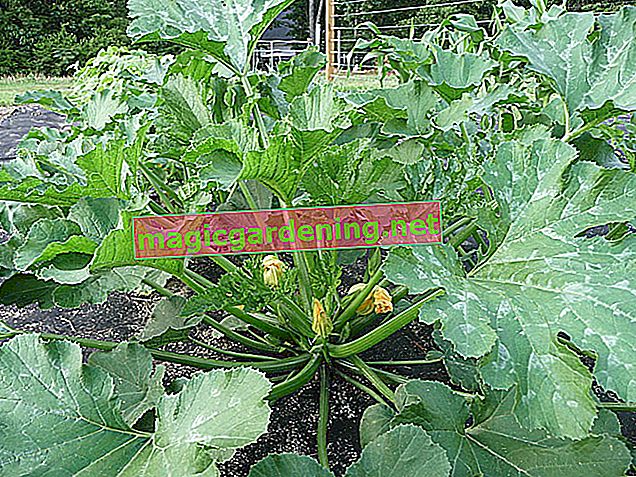
origin
The name Clivie describes both the genus Clivia and the popular ornamental plant Clivia miniata. It belongs to the amaryllis family and originally comes from South Africa. The plant grows in the valleys of Swaziland and in the provinces of KwaZulu-Natal, Mpumalanga and Eastern Cape. The Clivie came to Europe around 1850. Here it gained fame under the common name of Riemenblatt.
also read
- Help, my Clivia is getting yellow leaves!
- Is the Clivia Poisonous?
- How to look after your Clivia - tips and tricks
leaves
Clivia miniata develops basal leaves that are arranged in two rows. The leaves have a simple leaf blade and are sessile. The leaves are reminiscent of the shape of a sword. They can be up to six centimeters wide, are dark green in color and have a shiny surface.
blossom
Clivien carry large single flowers that crowd together to form golden inflorescences. There are between ten and 20 flowers at the end of an inflorescence stem. These are hermaphroditic and follow a threefold structure, which leads to a radial symmetry. Six bloom bracts take on the function of viewing. They are designed in the same way and have grown together at their base. The bright orange to red tones contrast with the yellow throat. Here are six stamens that encircle a stylus with a three-pronged stigma.
The flowers are between six and ten centimeters in size. Clivien develop their inflorescence stems as early as autumn. They grow out of the leaf axils and have flower buds that open in spring.
fruit
At the end of the flowering period, the individual flowers develop into round to oval berries. As the fruit ripens, they take on a red color. It can take up to a year for a fruit to ripen. Viviparia is typical of Clivien. The seeds germinate while they are still in the ripe berries on the mother plant. The seed first develops a taproot that digs through the fruit shell. Then the development of the cotyledons begins.
growth
Clivien are herbaceous plants that last for several years. They grow between 45 and 70 centimeters tall and develop underground rhizomes that serve as survival organs. They are thickened fleshy and help the plant to store nutrients. An onion-like stem grows from the rhizome and is formed from the leaf sheaths. Older specimens develop secondary shoots. They are a form of vegetative reproduction.
use
Clivia miniata provides color accents in interiors. It forms a harmonious contrast to exotic green plants such as the dragon tree, gold potted fern or zebra herb. Clivien are suitable for winter gardens, living rooms and bright entrance areas. They like to spend the summer outside.
Is Clivie Poisonous?
The fruits, leaves and flowers of the Clivie are considered to be slightly poisonous. They contain alkaloids that have negative effects on the organism. Sensitive people are prone to skin irritation when they come into contact with the parts of the plant. For safety, wear gloves when repotting or cutting the plant.
Possible symptoms:
- to cough
- Vomiting and diarrhea
- salivation
- Signs of paralysis
As a first aid measure, plenty of tea or water should be drunk after consumption. If large quantities have been eaten, charcoal can help. Because similar symptoms of poisoning can occur in dogs and cats, you should have your pet examined by a veterinarian.
Which location is suitable?
Clivia miniata prefers a bright location that is not in the blazing sun. The leaves are prone to sunburn in sunny places. An east or west facing window is ideal. Here the plant gets enough sun in the morning or in the evening. Clivien can't stand drafts.
Once you have found the perfect location, the bucket should not be turned or moved. It is important that the plant always faces the light on the same side. Otherwise their ability to flower suffers. A small line of chalk on the light side helps with orientation when you need to remove the plant pot from the windowsill.
Continue reading
balcony
During the summer months, the Clivien feel at home on balconies and roof terraces. They like the summer freshness when they get a sunny location. The place should be protected from the rain. Pay attention to the night temperatures in spring, because the plants do not tolerate freezing temperatures. You shouldn't move the plant too often, as it doesn't tolerate the constant adaptations to changed conditions well.
What soil does the plant need?
Clivien prefer a mixture of soil and compost. Quality soils for potted plants are commercially available, which provide the plants with an ideal basis for good growth. The soil should be loose and consist of medium-sized particles. This ensures optimal permeability. The pH should be between 5.5 and 6.
This is the ideal soil condition:
- loamy to humic
- permeable to water
- loose structure
- low in lime
- nutritious
Propagate Clivie
Clivia can be propagated with seeds or children. It can take three to five years for a plant to develop fruit for the first time. Kindel propagation takes place via side shoots that arise on the root ball of older plants. Cut off a piece of the tuber with a runner and a few leaves. The Kindel should be between 20 and 25 centimeters long. Use a sharp knife to create a clean cut. You can propagate the plant this way immediately after the inflorescences have faded.
Plant the side shoots in a mixture of peat and sand in equal proportions. Place the planter in a bright location away from direct sunlight. Initially, the young plants are watered moderately. Before watering, the soil should be slightly dry. The young clivia are repotted for the first time as soon as the first roots penetrate the top layer of soil. Fill the new planter with compost soil. The plant is cared for like a full-grown specimen.
sowing
As soon as the fruits are ripe, they can be sown. You can recognize ripe berries by their dark red color. Often the seeds inside have already started germinating, which means that the chances of successful propagation are very high.
Pick the berries from the plant and carefully remove the fruit casing. Press the seeds into a planter filled with potting soil. They shouldn't sit deeper than an inch in the substrate. The seeds are loosely covered with substrate.
Make sure that the soil remains evenly moist. To do this, cover the planter with a transparent film. Take the foil off for a few minutes every day to ensure air circulation. This means that mold spores have no chance of settling. After about three weeks, the plants can be pricked out and transplanted into a larger container.
Clivie in the pot
Clivia are grown in pots because they cannot adapt to the conditions outdoors. They react sensitively to suboptimal site conditions and should therefore always be in the same place. Use a heavy planter, as Clivien grow a lot in width and thus develop a lot of weight. Light plant pots tend to topple over quickly.
Pouring Clivie
Clivia miniata needs constantly moist conditions. Make sure that the root ball is always moist. A lack of water or waterlogging causes the leaves to fade and become wrinkled. The plant tolerates drought better than too much moisture. Reduce the watering in winter. During the resting phase, the Clivie doesn't mind if the root ball almost dries out. Only at the beginning of the new growth phase do you increase the watering again.
Fertilize Clivie properly
The first flower stalks appear between February and March. This development increases the plants' nutritional needs. From this point on, give your plant a liquid fertilizer over the irrigation water. Clivien enjoy regular fertilization, which takes place every two weeks. In September you should slowly reduce the nutrient intake and finally stop. During this time, your Clivie prepares for the winter break, during which it does not need any fertilizer.
Continue reading
Cut clivie properly
Once the inflorescences have wilted, it's time to cut the stems. The fruit development robs the plants of energy and has a negative effect on the next flower formation. Cut off withered parts of the plant regularly. Use a clean and sharp cutting tool for cutting measures. This reduces the risk of fungi or bacteria transferring from the blade to the plant and penetrating the organism via the interface.
If your Clivie has gotten too big, pruning back is a good idea. You should never cut back more than a third of the plant, otherwise it will not recover. The ideal time for this measure has come before the winter rest.
Repot
Transplanting is stressful for the plant. Therefore, you should not take this care measure during the flowering period or in the winter dormant phase. Transplant Clivien immediately after the February break. After that, she has enough time to draw new strength before the flowers develop and to settle in the fresh soil. Alternatively, you can repot Clivien in September or October before they go into hibernation. Repotting is necessary if the plant is affected by diseases or pests.
Cover the bottom of the pot with potsherds, quartz sand (€ 14.90 on Amazon *) or gravel. This layer acts as a drainage and ensures optimal water drainage. Fill the pot one-third full with substrate and place the root ball in the pot. Then the gaps are filled with soil up to two centimeters below the edge of the pot. Lightly press the top layer and give the plant enough water. When the substrate has set in the first week, you can top up with some soil.
Continue reading
Overwinter
Clivien retire in the fall and spend the winter in a dormant state. This phase lasts about four months. During this time, the plant needs a cool location with temperatures between ten and twelve degrees Celsius. Put your Clivie in an unheated room in October where it will find consistent conditions through January.
Basement rooms, stairwells, winter gardens or frost-free garages with south-facing windows are suitable as winter quarters. If the lighting conditions in the rooms are suboptimal, you can provide the plant with a light source using fluorescent tubes or plant lamps. Place the lamps 20 centimeters above the plant.
Diseases
Clivien are robust against pathogens. The most common damage patterns can be traced back to waterlogging, which results in root rot. You can recognize rotting roots by the fact that the stability of the plant declines. Stems and leaves become soft and droop limply. The leaves turn yellow and dry up.
Take the plant out of the wet soil and remove the remaining soil from the roots. Very soft and rotten roots are cut off. Clean and dry the rhizome with a clean cloth and let the entire plant dry for the next 24 hours. Temperatures of 22 degrees Celsius are ideal. Then plant the Clivie in fresh substrate and only lightly water the plant. The plant should be watered sparsely for the next two weeks before returning to normal care.
Pests
Clivia miniata is primarily attacked by mealybugs and mealybugs, which are classified as scale insects. The pests leave webs reminiscent of cotton balls and a sticky film on the leaf surface. They occur more frequently in winter, when the air is very dry from heating.
A solution of 30 grams of solid soft soap (€ 17.27 at Amazon *) and hot water is suitable for combating it. Stir the water vigorously so that the soap dissolves completely. Let the solution cool before pouring it into a spray bottle. All parts of the plant are sprayed so that small droplets are created. Repeat the procedure the next day.
Clivie doesn't bloom
If the clivie is not blooming, there may be several possible causes. The most common mistake that leads to a failure of the bloom is too warm a location in winter. Clivien need a cold stimulus so that they open their flowers in the coming spring. The lack of light can also prevent flowers from developing. Make sure the location is bright enough in winter.
Continue reading
Tips
While most plants need to be repotted as soon as the container becomes too tight, the Clivie benefits from the lack of space. The flower development is promoted by the reduced space available in the substrate. Repotting is therefore not necessary when the first roots grow out of the substrate. Repot the plant as little as possible.
sorts
- Striata : old variety, important cultivated form. Leaves variegated yellowish-green, young plants from Kindeln also develop this color.
- Aurea : Cream-colored flowers, blooms in winter.
- Clivia nobilis: hanging flowers, petals orange with a green tip or yellowish, pink.


